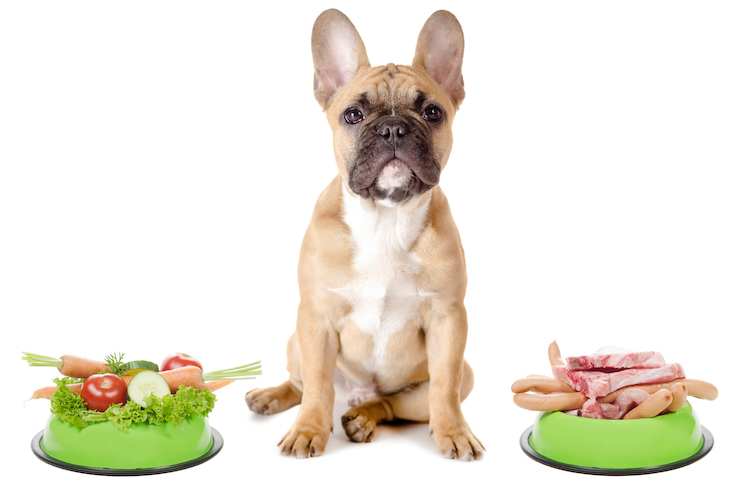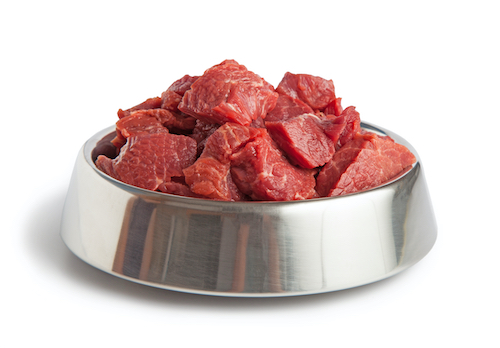
This month is Responsible Pet Ownership Month. K9 Nation is focusing on a number of articles and blogs which align with this theme. Nutrition and diet is a big part of being a responsible dog owner, it supports the overall health and wellbeing of the dog and I want to address it in this next blog piece.
With all of the choices out there and having to feed 5 dogs of different breeds, size and weights maintaining a balanced diet for them all can sometimes be tricky. In this blog, I want to talk about the key details to consider when choosing the right diet for your dog or indeed dogs in my case.
"You want the best diet possible for your dogs but it also needs to be practical to fit within your busy day to day lives.”
There is so much choice on the market and sometimes it becomes overwhelming and confusing not knowing where to start, in addition, you want the best diet possible for your dogs but it also needs to be practical to fit within your busy day to day lives and not only that it needs to be vastly available, economical and cost-effective.
For me, having 5 dogs I need a choice of food that I can easily get access to – so must be available locally or have quick delivery timescales. In addition, my dogs love choice – and do become bored very quickly of certain foods, and most importantly must be right for an individual dog. Some of my dogs, for example, Radar or Jive need more calories than Duke or Ted for example and Daisy is a senior dog so has additional nutritional needs.

I’m by far not a food expert, but as a pet owner it is my responsibility to ensure that my dogs remain healthy, fit and happy and this must start from the inside – their diet!

It is extremely important for me to consider the different variables mentioned above – age, weight, gender body composition plus my dog’s exercise regime. Whippets like to have bursts of off the lead exercise along with controlled lead walks. We walk our dogs at least twice a day and it will alternate between off the lead sprinting to longer road walks.
Activity levels are very important when considering your dog’s diet, therefore a healthy diet with high-quality ingredients will be beneficial to your dog.
My dog’s diets all include the right balance of the six major nutrient groups; proteins, fats & oils, minerals, vitamins, carbohydrates and water. Most good quality pet food should provide your dog with this nutritional balance.
So many choices for dog diet
The dog food industry has evolved hugely over the last few years with so many variants on the market below I have listed some of the foods which you may want to consider:
Dry food Kibble is the most economical type of commercial dog food. It also lasts for a long time and does not need to be refrigerated. Dry dog food can also help to keep your dog’s teeth healthy since chewing crunchy dry food helps to reduce tartar build-up. When it comes to choosing a specific dry dog food, read the ingredients carefully, and choose a brand that uses wholesome ingredients. Different varieties and makes are available in today’s markets, for me, kibble is extremely important in my daily dog’s diets. I feed a very small amount of kibble each day to my dogs but mix it up with lots of other choices too, which I will touch on further on in this blog.
For me, Royal Canin, Pro Plan or indeed Eukanuba works well for my dogs but again I do mix it up sometimes by changing to different makes, please do remember if you do go from one kibble to another – to change food gradually so that you do not upset your dog’s tummy. In addition, if you are feeding your dog any form of kibble you will find that your dog will drink more water so please ensure you have fresh water available to your dog at all times.
Tinned wet food has a long shelf life, and is easy to find in any supermarket, but it can be expensive. For some owners, it is definitely worth the expense, but not every brand of commercial tinned food provides the protein that your dog needs. I will feed my dogs tinned food sometimes, typically if I am travelling to a show with my dogs I will take a couple of tins for convenience, but I always try and opt for a good brand which includes vegetables too.
In addition to this, it’s key to also know that most tinned dog food is about 75 percent water. The higher the water content, the less nutritious, meaning your dog will consume more food. If you decide to feed your dog tinned food, it’s best to go with a kind that’s labelled “complete and balanced”.
Semi-moist dog food is commercial food shaped like pork chops, burgers, or other meaty foods. These kinds of foods are the least nutritional of all dog foods and contain many artificial flavours and colourings. They can be given to your dog as an occasional treat, but they should not be considered a diet in themselves, as they do not provide the nutrition that your dog requires.
Home-cooked – Some dog owners value the ability to be in complete control of their dog’s diet. Me personally, I make my own dogs food at least 4 times per week, I find it not only nutritious but also my dog’s do well on what I feed. Feeding your dog a home-cooked diet is time consuming, but many owners think the extra effort is worth the peace of mind they gain. If you decide to feed your dog a home-cooked diet, research canine nutrition so you can be sure your dog is not missing out on any vital nutrients. As mentioned above I do also feed a very small amount of kibble also to bulk the food up and ensure that the nutrients and vitamins are included. My dogs love nothing more than my chicken, liver and vegetable casserole with a small amount of rice added.
A raw diet – consists of raw meat, preferably with some bones (never cooked bones, only raw) and organs mixed in, as bones are a natural source of phosphorus and calcium. This type of diet works well for many dogs since dogs have short intestinal tracts and strong stomach acids, both of which make it easy for them to consume and digest raw food. However, it can be quite time consuming, and there is a risk of dietary imbalances, causing broken teeth on bones, and food poisoning. Before changing your dog to a raw diet, talk to your veterinarian about the risks and benefits.
With so much information and choice, it’s very hard to know what is the best diet for your dog (s). I was brought up with dogs from a very small age, show dogs across various breeds and was always told that your dog will pretty much tell you if the diet is right, they are a perfect weight, have a shiny coat, bright eyes, good clean teeth and most importantly their stools will also tell if they are getting enough nutrients and a balanced diet. The stool should be of a soft consistency not too big, of a soft colour, no runs or hard stools – if you find your dog not looking its best or has a bad stomach consult your vet or a nutritionist who will be able to advise on what to do next.
"Look at the main options first of all, and look at what works for you and your lifestyle.”
I’ve had many friends approach me when getting a dog for the first time overwhelmed by the food choices available, my honest advice is to do what works for you. If you have time and patience opt for a variety of raw or indeed a kibble and homemade option. Don’t make too many changes to your dog’s diet in one go and slowly introduce new foods. I’ve been lucky in that the dogs I have bought, have come from reputable breeders and have been weaned on a good diet, so typically followed that instruction then gradually introduced new foods.
On a weekly basis my dogs will have a mix of chicken, liver, lamb, sardines, heart, kidney beef and tripe – this can be fed raw or cooked depending on which route you take. I very rarely opt for a tinned option unless I’m attending a show or indeed my dogs are staying with my dog sitter, it’s a convenient option for others to pick up particularly when catering for 5 dogs.
My recommendation would be to look at the main options first of all, and look at what works for you and your lifestyle. Then focus on that one area and choose a range that you like, is available for delivery or your local supplier stocks, then look at how you ensure a variety can be maintained on this type of diet. You may even find yourself going to a large pet store and looking at all the nutritional aspects of each type of feed and kibble before making this decision. One thing that is for certain, everyone will have their own recommendations, and have their own ways of feeding their dogs. My instruction is simple – feed your dog what you feel is right, taking on board all of the advice, your dog will show if this diet is working, if they look their best and have the energy to perform their natural breed role then this diet works for your dog.
If your dog has any specific health problems or if you are in any doubt as to its feeding requirements we recommend you consult your veterinarian for further advice.
